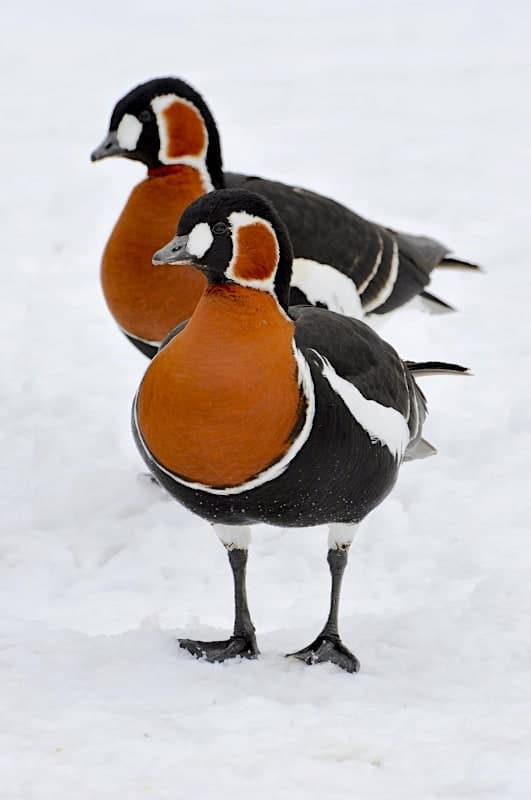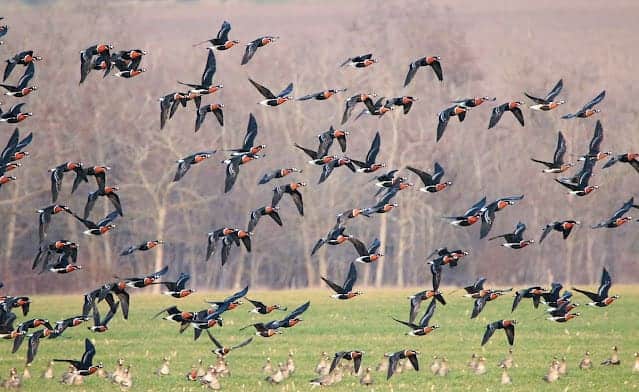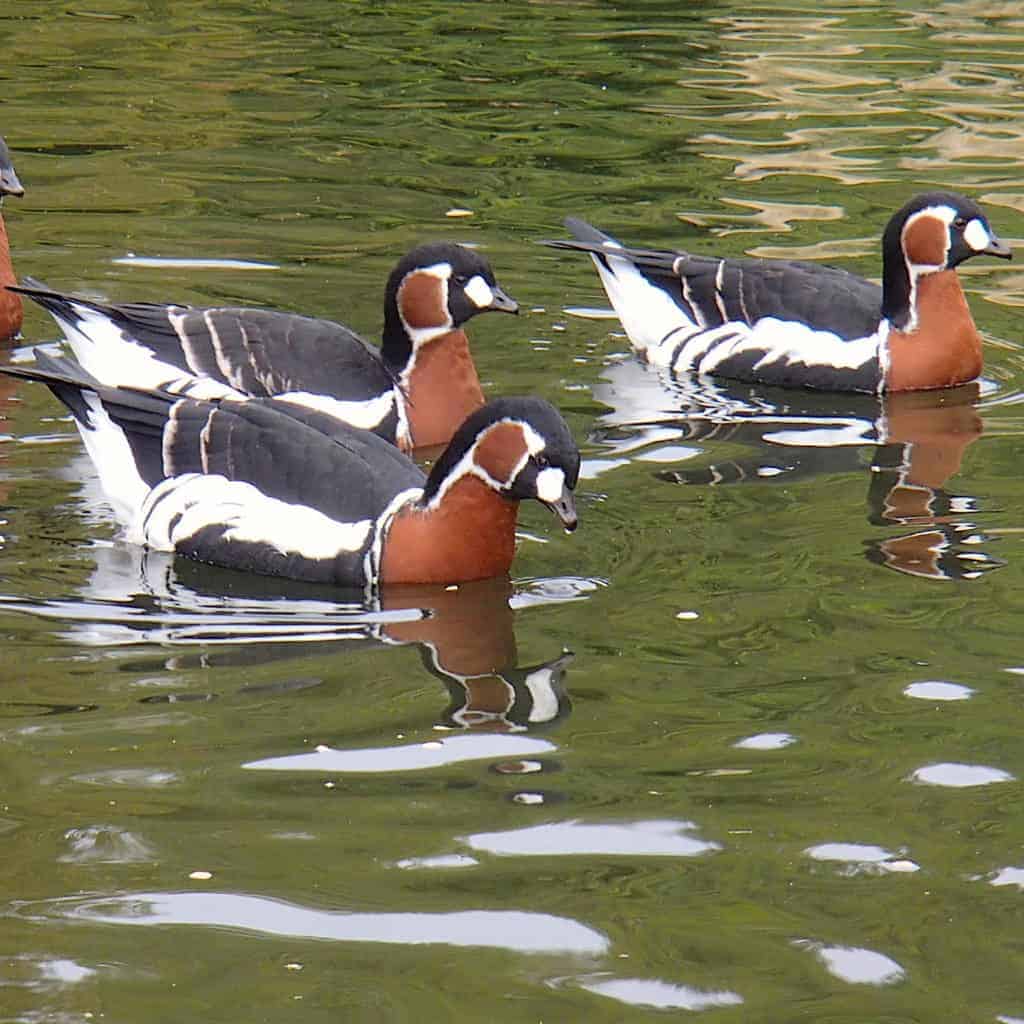Red-breasted Goose


Branta ruficollis
Red-breasted Geese are highly sought after in wildfowl collections and are now becoming more prolific in captivity. They have a beautiful and bold pattern of black, white and chestnut plumage and are the smallest of the northern geese.
During the breeding season Red-breasted Geese can be noisy, uttering a harsh and high pitched tone. Despite this they mix well with other waterfowl within a collection.
Red-breasted Geese are both agile fliers and more terrestrial than most northern geese. They overwinter and breed in a very limited number of sites in south eastern Europe.

Given space and areas where the nest can be defended, Red-breasted Geese can do well in a collection.
Preferring the company of other Red-breasted Geese, they lay clutches of 3-7 eggs with an incubation period of 25 days. In the wild they nest in small colonies, often near Peregrine Falcons, which help to protect them from predators.
FURTHER READING
Birdguides, 2020. Track migrating Red-breasted Geese
Harteman, J. Harteman Wildfowl Aviaries, Red-breasted Goose
Share this page